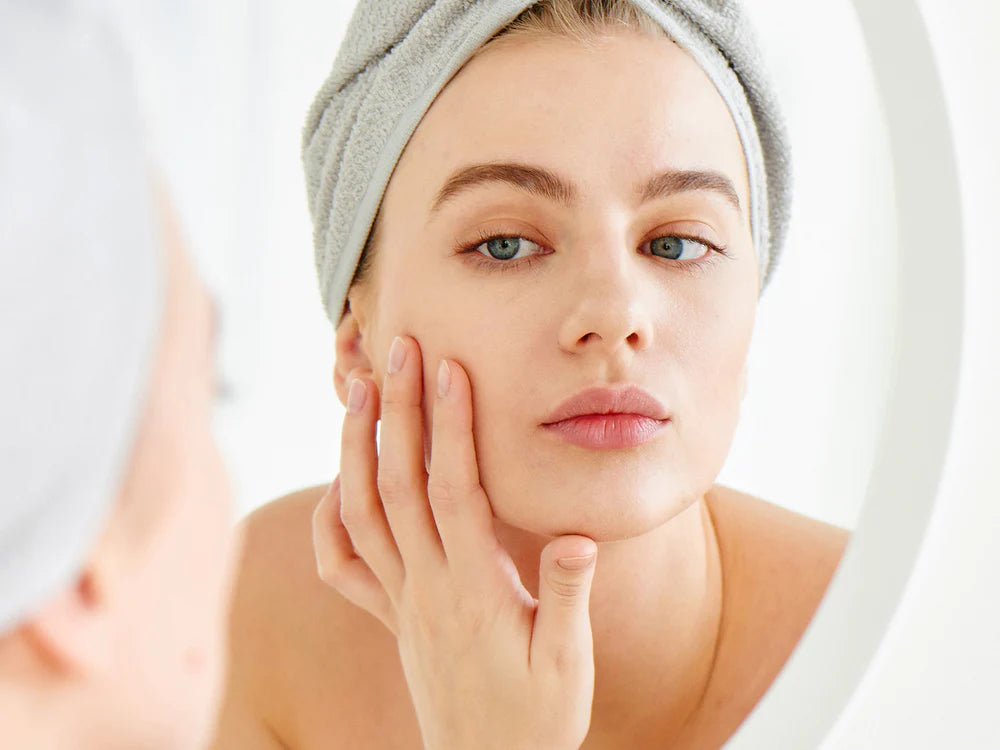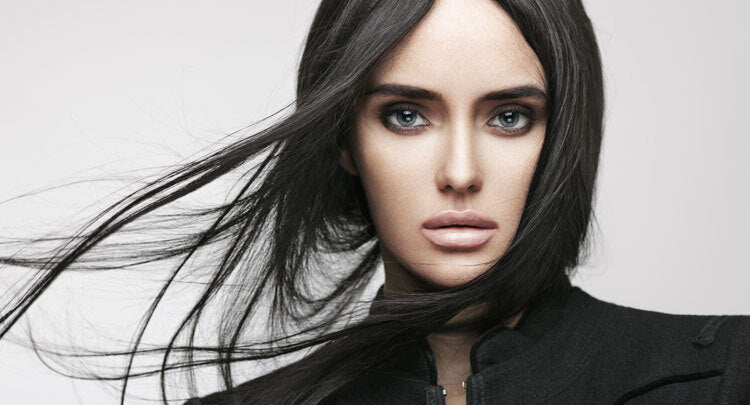
Types of Pimples and How to Manage Them
Pimples, also known as zits or acne, are common skin blemishes that occur when hair follicles become clogged with oil, dead skin cells, and bacteria. They are a type of acne and can range from small, superficial whiteheads or blackheads to more inflamed and noticeable red papules or pustules. Pimples can appear on various parts of the body, but they are most commonly found on the face, neck, chest, back, and shoulders.
The development of pimples involves several key factors:
- Excess Sebum Production: Sebaceous glands in the skin produce an oily substance called sebum. Excess production of sebum can contribute to the clogging of hair follicles.
- Buildup of Dead Skin Cells: Skin cells naturally shed, but in some cases, they may not slough off properly. Accumulated dead skin cells can mix with sebum, creating a plug that obstructs the hair follicle.
- Bacterial Infection: The bacterium Propionibacterium acnes, which is normally present on the skin, can multiply within the clogged follicle, leading to inflammation and the formation of a pimple.
The appearance and severity of pimples can vary, ranging from mild cases with a few whiteheads or blackheads to more severe cases with larger, inflamed lesions, such as nodules or cysts. Factors like hormonal changes, genetics, diet, and skincare habits can influence the development of pimples.
What is the Difference Between Acne and Pimples?
Acne and pimples are related terms, but they refer to different aspects of the same skin condition. Acne is a broad and chronic skin condition characterized by the presence of various types of lesions, including pimples, blackheads, whiteheads, nodules, and cysts. Pimples specifically refer to one type of acne lesion, which is a small, raised, inflamed bump on the skin.
Acne isn’t a one-size-fits-all diagnosis. It’s what we call a “multifactorial disease,” which means that it can be caused by many factors. These different triggers can then manifest in a wide variety of blemishes. This is why your breakout may look very different from your best friend’s, your sibling’s, or your significant other’s.
What are the Types of Pimples
Also known as “closed comedones,” whiteheads are one of the most typical forms of acne. They appear on the skin as small or medium bumps, usually whitish or skin-tone in color. Whiteheads occur when a pore becomes clogged with a mix of dead skin cells and sebum. This clogged pore gets covered by a layer of skin and develops pus within. This pus is what gives the whitehead its white appearance (and name).

Also called “open comedones,” blackheads get their name because they appear as dark spots on your skin. Like whiteheads, blackheads are caused by clogged pores. Unlike whiteheads, those clogs of oil and skin cells are open to the air. The clogs change color when they come into contact with oxygen, which gives them a dark appearance.
Tip: It’s easy to confuse blackheads with natural skin phenomena called sebaceous filaments. Learn how to tell the difference!

3. Papules
Papules are the swollen red bumps that so many of us imagine as “typical” breakouts. Like other acne blemishes, papules develop when excess oil and dead skin cells clog your pores. Pressure builds up in the blocked pore and can cause the walls of your pore to rupture, spreading nastiness into the surrounding skin. Your immune system responds to the rupture with inflammation, giving papules their red and swollen appearance.

4. Pustules
Pustules are essentially papules that fill with pus when your immune system kicks in. The red bumps develop a swollen white or yellow cap, giving pustules that classic pimple look. Pustules can form anywhere on your body, but they’re most commonly found in areas such as your face, chest, and back.

5. Nodules
Nodules are a more severe form of acne that can be hard to address. They appear similar to papules but start deeper within the layers of your skin, where they are challenging to treat and nearly impossible to pop. Nodules look like red or skin-colored bumps and never have a “head” like whiteheads or pustules. They feel firm and are painful to the touch. Acne nodules can appear on their own or in sore patches across your skin. Sometimes they even coexist with equally painful cysts (see below) in a breakout known as nodulocystic acne.

6. Cysts
Cystic acne is another form of severe acne that forms far below the surface of your skin. Like nodules, cysts resemble deep, red lumps. But unlike nodules, cysts are filled with pus or other liquids and feel soft to the touch. Either way, they can be very tender and painful. Cystic acne is common along the face and jawline, or even as bacne. Caused by the usual trifecta of excess oil, dead skin, and bacteria, cysts are a particularly stubborn form of a breakout, lingering for weeks or even months.
Cystic acne is not caused by poor hygiene. However, following a nourishing skincare routine designed for acne-prone skin can help to keep cystic acne under control and prevent future breakouts. Cystic acne forms deep within your skin, where most treatments don’t reach. But our Clear Skin Elixir is worn overnight, so the healing powers of camellia and French pink clay have time to sink in and repair your skin from within!

7. Milia
We’ll be honest: milia (sometimes known as “milia seeds”) aren’t technically classified as acne. But they’re often confused for pimples and should be on your radar if you’re trying to identify mystery blemishes.
Technically tiny cysts, milia are small, light bumps that often crop up around your nose, cheeks, and eyes. They are caused by trapped skin flakes or keratin deposits. Keratin is the protein responsible for keeping your hair, skin, and nails strong. But when it gets caught beneath your skin, it causes hard bumps to form. Milia usually disappears on their own after a few months.

What Causes a Pimple to Form?
The formation of a pimple involves a complex interplay of factors, including the overproduction of oil, the shedding of skin cells, and the presence of bacteria. Here are the key steps that contribute to the formation of a pimple:
- Excess Sebum Production: Sebaceous glands in the skin produce an oily substance called sebum. Hormonal changes, particularly during puberty, can lead to an increased production of sebum. Excess sebum can mix with dead skin cells and create a plug in the hair follicles.
- Buildup of Dead Skin Cells: Skin cells naturally shed, but in some cases, they may not slough off properly. When dead skin cells accumulate, they can mix with sebum, forming a plug that obstructs the hair follicle.
- Bacterial Proliferation: The bacterium Propionibacterium acnes, which is normally present on the skin, can proliferate within the clogged hair follicle. This bacterial growth triggers an inflammatory response from the immune system.
- Inflammation: The immune system responds to the bacterial presence by releasing inflammatory chemicals. This inflammation causes the surrounding skin to become red, swollen, and tender, leading to the formation of a pimple.
Various factors, including genetics, hormonal changes, diet, and skincare habits, can influence the susceptibility to pimple formation. Managing acne involves adopting a consistent and effective skincare routine, and making lifestyle adjustments.
How Do You Get Rid of Pimples?
Getting rid of pimples involves a combination of good skincare practices, lifestyle changes, and, in some cases, medical interventions. Here are some general tips on how to treat and prevent pimples:
- Keep the Skin Clean: Use a gentle, non-comedogenic cleanser to clean your face twice a day, especially in the morning and before bedtime. Avoid over-cleansing, as this can strip the skin of its natural oils, leading to increased sebum production.
- Avoid Picking or Squeezing: Resist the urge to pick, squeeze, or pop pimples, as this can worsen inflammation, lead to scarring, and spread bacteria.
- Moisturize: Use a non-comedogenic moisturizer to keep the skin hydrated without causing additional breakouts.
- Choose Oil-Free and Non-Comedogenic Products: Opt for oil-free and non-comedogenic skincare and makeup products to prevent pore blockages.
- Limit Sun Exposure and Use Sunscreen: Excessive sun exposure can worsen acne and cause inflammation. Use a broad-spectrum sunscreen with at least SPF 30 to protect your skin.
- Maintain a Healthy Diet: Eat a balanced diet with plenty of fruits, vegetables, and whole grains. Limit the consumption of high-glycemic foods and dairy, as these may contribute to acne in some individuals.
- Stay Hydrated: Drink enough water to keep your skin and body hydrated.
- Manage Stress: Stress can exacerbate acne, so practice stress-reducing activities such as exercise, meditation, or deep breathing.
It's important to note that consistent and patient adherence to a skincare routine is key, and results may take time.
How to Prevent Pimples
Preventing pimples involves adopting a comprehensive skincare routine, making lifestyle adjustments, and being mindful of factors that can contribute to acne. Here are some tips to help prevent pimples:
- Cleanse Regularly: Use a gentle, non-comedogenic cleanser to wash your face twice a day (morning and night). Avoid harsh cleansers that may strip the skin of natural oils.
- Exfoliate: Include regular exfoliation in your skincare routine to help remove dead skin cells.
- Use Non-Comedogenic Products: Select skincare and makeup products labeled as non-comedogenic, which means they are less likely to clog pores.
- Moisturize: Use a non-comedogenic moisturizer to keep your skin hydrated without contributing to excess oil.
- Hands Off: Avoid touching your face unnecessarily, as your hands can transfer bacteria and dirt to your skin.
- Avoid Picking or Squeezing: Refrain from picking, squeezing, or popping pimples, as this can worsen inflammation and increase the risk of scarring.
- Healthy Diet: Consume a balanced diet rich in fruits, vegetables, whole grains, and lean proteins. Limit the intake of high-glycemic foods and dairy, which may be associated with acne in some individuals.
- Stay Hydrated: Drink enough water to maintain overall skin health.
- Manage Stress: Practice stress-reducing activities such as exercise, meditation, yoga, or deep breathing to help manage stress levels.
- Regular Exercise: Engage in regular physical activity to promote overall health, including healthy skin.
- Sun Protection: Use sunscreen with at least SPF 30 to protect your skin from the harmful effects of UV rays. Sunburn can worsen acne and cause inflammation.
- Clean Personal Items: Regularly clean items that come into contact with your skin, such as pillowcases, phone screens, and makeup brushes, to reduce the risk of bacterial transfer.






